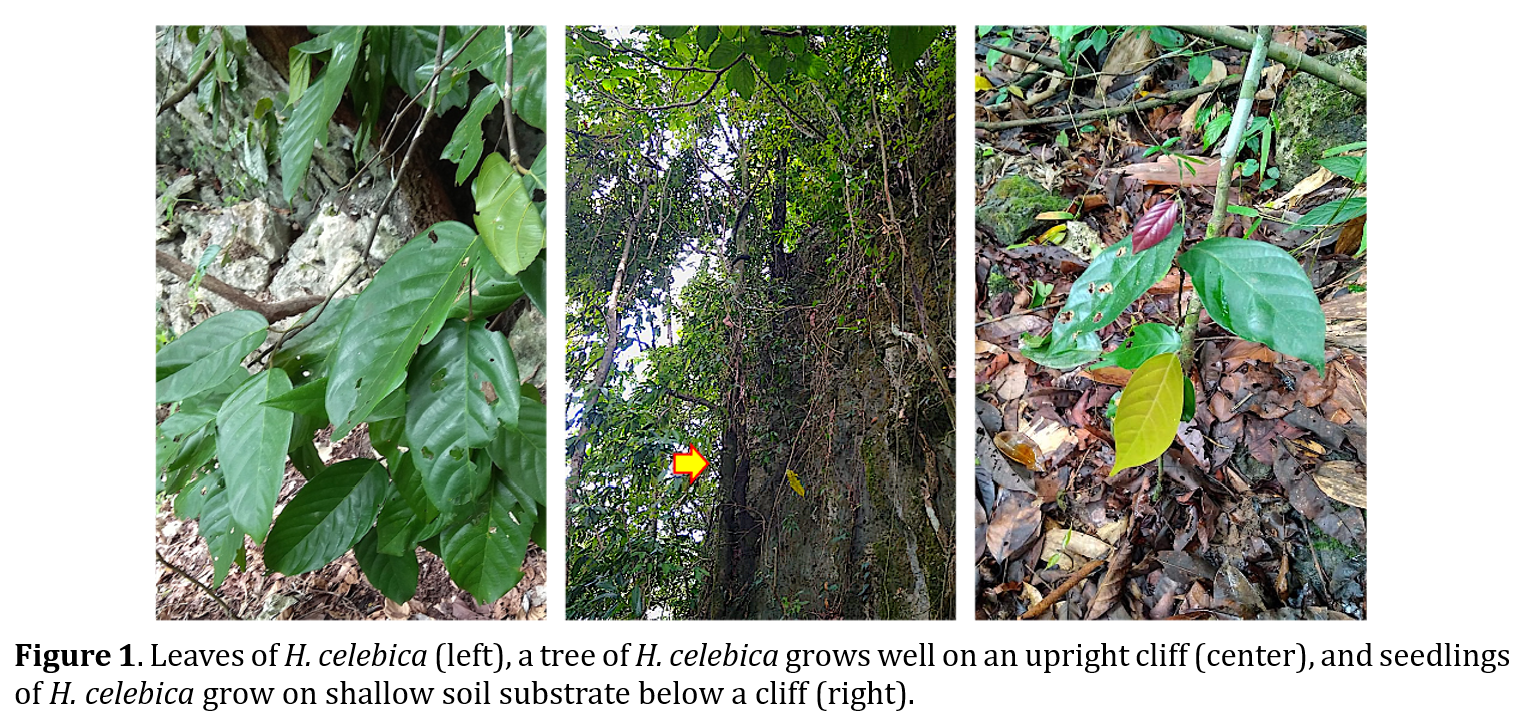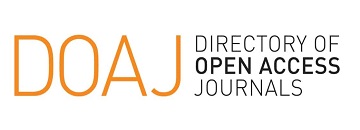Factors Behind Cessation of Illegal Logging by Local Communities for Valuable Timber-producing Endemic Species, Hopea celebica

Downloads
Downloads
Acciaioli, G. (2008). Environmentality reconsidered: indigenous To Lindu conservation strategies and the reclaiming of the commons in Central Sulawesi, Indonesia. In: People, Protected Areas and Global Change: Participatory Conservation in Latin America, Africa, Asia and Europe (M. Galvin and T.Haller Eds.). NCCR North-South. Pp. 401-430. Available at https://research-repository.uwa.edu.au/en/publications/environmentality-reconsidered-indigenous-to-lindu-conservation-st. Accessed on July 20, 2021.
Aldashev, G., & Vallino, E. (2019). The dilemma of NGOs and participatory conservation. World Development, 123, 104615. https://doi.org/10.1016/j.worlddev.2019.104615.
Ashton, P.S. (1982). Dipterocarpaceae. Flora Malesiana - Series I Spermatophyta, Flowering Plants. 9(2), 237-552.
Ashton, P. (1998). Hopea celebica. The IUCN red list of threatened species 1998: e.T33093A9750682. http://dx.doi.org/10.2305/IUCN.UK.1998.RLTS.T33093A9750682.en. Accessed on March 12, 2019.
Backer C.A., & Van den Brink, R.C.B. (1963). Dipterocarpaceae in Flora of Java I. NVP Noordhoff, Groningen, The Netherlands.
Berkes, F. (2007). Community-based conservation in a globalized world. PNAS, 104(39), 15188-15193. https://doi.org/10.1073/pnas.0702098104.
Campos-Silva, J.V., Peres, C.A., Hawes, J.E., Abrahams, M.I., Andrade, P.C.M., & Davenport, L. (2021). Community-based conservation with formal protection provides large collateral benefits to Amazonian migratory waterbirds. PLoS One, 16(4), e0250022. https://doi.org/10. 10.1371/journal.pone.0250022.
Ceballos, G., Ehrlich, P.R., Barnosky, A.D., García, A., Pringle, R.M., & Palmer, T.M. (2015). Accelerated modern human–induced species losses: entering the sixth mass extinction. Science Advances, 1(5), e1400253. https://doi.org/10.1126/sciadv.1400253.
Chia, F.R. (2013). Growth performance of dipterocarp species planted under Poring bamboo (Gigantochloa levis). Sepilok Bulletin, 17 & 18, 47-55. https://forest.sabah.gov.my/images/pdf/publication/sepilok-bulletin/SepilokBulletin.17.18.pdf. Accessed on July 18, 2021.
Christiawan, P.I. (2017). The role of local wisdom in controlling deforestation. International Journal of Development and Sustainability, 6(8), 876-888. Available at https://isdsnet.com/ijds-v6n8-25.pdf. Accessed on 22 November 2022.
Syarif, E., Fatchan, A., Sumarmi, & Astina, I.K. (2016). Tradition of "Pasang Ri-Kajang" in the forests managing in system mores of "Ammatoa" at District Bulukumba South Sulawesi, Indonesia. Mediterranean Journal of Social Sciences, 7(6), 325-332. Available at https://www.richtmann.org/journal/index.php/mjss/article/view/9604. Accessed on 22 November 2022.
Forester, D.J., & Machlist, G.E. (1996). Modeling human factors that affect the loss of biodiversity. Conservation Biology, 10(4), 1253-1263. https://doi.org/10.1046/j.1523-1739.1996.10041253.x.
Heyne, K. (1950). De nuttige planten van Indonesie. Deel I. 3e Druk. NV Uitgeverij W Van Hoeve ‘s-Gravenhage/Bandung.
Ikpa, T.F., Dera, B.A., & Jande, J.A. (2009). Biodiversity conservation: why local inhabitants destroy habitat in protected areas. Science World Journal, 4(4), 22-27. https://doi.org/ 10.4314/swj.v4i4.53584.
Lammers, P.L., Richter, T., Lux, M., Ratsimbazafy, J., & Mantilla-Contreras, J. (2017). The challenges of community-based conservation in developing countries—A case study from Lake Alaotra, Madagascar. Journal for Nature Conservation, 40, 100-112. https://doi.org/10.1016/j.jnc.2017.08.003.
Mankga, L.T., & Yessoufou, K. (2017). Factors driving the global decline of cycad diversity. AoB Plants, 9(4), plx022. https://doi.org/10.1093/aobpla/plx022.
Maua, J.O., MugatsiaTsingalia, H., Cheboiwo, J., & Odee, D. (2020). Population structure and regeneration status of woody species in a remnant tropical forest: a case study of South Nandi forest, Kenya. Global Ecology and Conservation, 21, e00820. https://doi.org/10.1016/j.gecco.2019.e00820.
Sirimorok, N. & Rusdianto, E. (2020). The importance of being political: emergence of a multi-stakeholder forum at the Lake Malili Complex, South Sulawesi. Forest and Society, 4(1), 98-114. https://doi.org/10.24259/fs.v4i1.7442.
Ngakan, P.O., Komarudin, H., Achmad, A., Wahyudi, & Tako, A. (2006). Community dependence, perception and participation on forest resources: a case study in Pampli Hamlet, North Luwu Regency, South Sulawesi Province, Indonesia. Center for Forestry Research: Forests and Governance Programme No 8/2006. Intiprima Karya, Jakarta. Available at https://www.cifor.org/publications/pdf_files/Books/BNgakan0601.pdf. Accessed July, 04 2019.
Noss, A.J. (1997). Challenges to nature conservation with community development in Central African forests. Oryx, 31(3), 180-188. https://doi.org/10.1046/j.1365-3008.1997.d01-10.x.
Noss, R.F. & Kranz, R. (2001). Ecological issues in conservation. Ecological Applications, 11, 945–946. https://doi.org/10.1890/1051-0761(2001)011[0945:EIIC]2.0.CO;2.
Ozuruoke, P.N., Wokekoro, E., & Ihuah, P.W. (2021). Challenges facing community participation in managing natural resources in Omoku, Nigeria. MOJ Ecology & Environmental Sciences, 6(3), 70‒73. https://doi.org/ 10.15406/MOJES.2021.06.00217.
Pesurnai, A.J. (2018). Local wisdom in a new paradigm: applying system theory to the study of local culture in Indonesia. IOP Conf. Series: Earth and Environmental Science, 175, 012037. https://doi.org/10.1088/1755-1315/175/1/012037.
Purwaningsih, P. (2004). Ecological distribution of Dipterocarpaceae species in Indonesia. Biodiversitas, 5(2), 89-95. https://doi.org/10.13057/biodiv/d050210.
Ruiz-Mallén, I., and Corbera, E. (2013). Community-based conservation and traditional ecological knowledge: implications for social-ecological resilience. Ecology and Society, 18(4), 12. http://dx.doi.org/10.5751/ES-05867-180412.
Sodhi, N.S., Brook, B.W., & Bradshaw, C.J.A. (2014). Causes and consequences of species extinctions. In: The Princeton Guide to Ecology (S. A. Levin, S. R. Carpenter, H.C.J. Godfray, A.P. Kinzing, Michel Loreau, J.B. Losos, B. Walker, and David S. Wilcove Eds.). Princeton University Press. Pp: 514-520. https://doi.org/10.1515/9781400833023.514.
Sudarmonowati, E., Yulita, K.S., Partomihardjo, T., & Wardani, W. (2020). Indonesia plant red list 1: 50 species of commercial timber trees. LIPI Press Bogor Indonesia. In Indonesian. Available at https://e-service.lipipress.lipi.go.id/press/catalog/download/310/270/1106-1?inline=1. Accessed on 24 July 2021.
Vold, T., & Buffett, D.A. (2008). Ecological concepts, principles and applications to conservation, BBC. 36 pp. Available at: http://www.biodiversitybc.org/assets/pressReleases/BBCPrinciplesWEB.pdf. Accessed on 24 July 2021.
Western, D. (2001). Human-modified ecosystems and future evolution. Proceeding of the National Academy of Science of the United State of America, 98: 5458-5465. https://doi.org/10.1073/pnas.101093598.
Widiyatno, Hidayati, F., Hardiwinoto, S., Indrioko, S., Purnomo, S., Jatmoko, Tani, N., & Naiem, M. (2020). Selection of dipterocarp species for enrichment planting in a secondary tropical rainforest. Forest Science and Technology, 16(4), 206-215, https://doi.org/10.1080/21580103.2020.1831620.
Yule, J.V., Fournier, R.J., & Hindmarsh, P.L. (2013). Biodiversity, extinction, and humanity’s future: the ecological and evolutionary consequences of human population and resource use. Humanities, 2(2), 147–159. https://doi.org/10.3390/h2020147.








